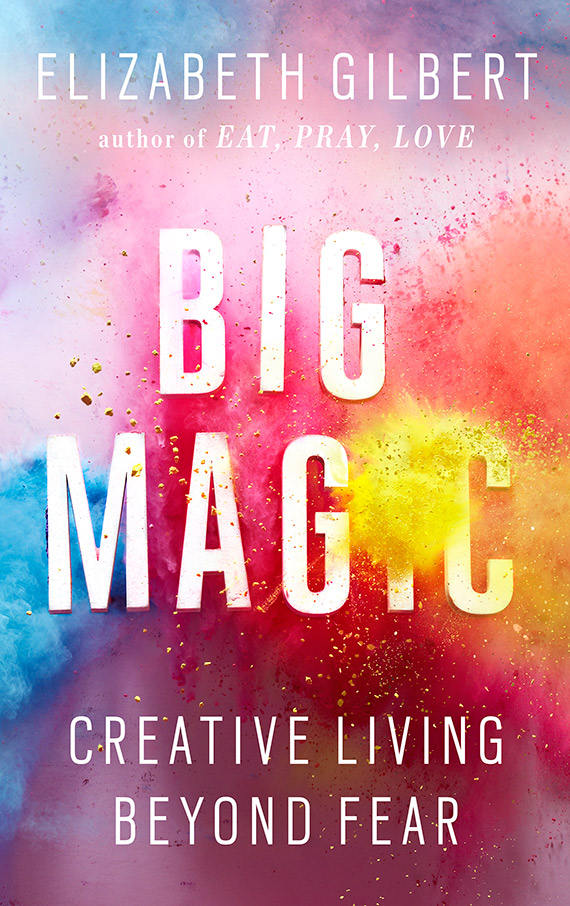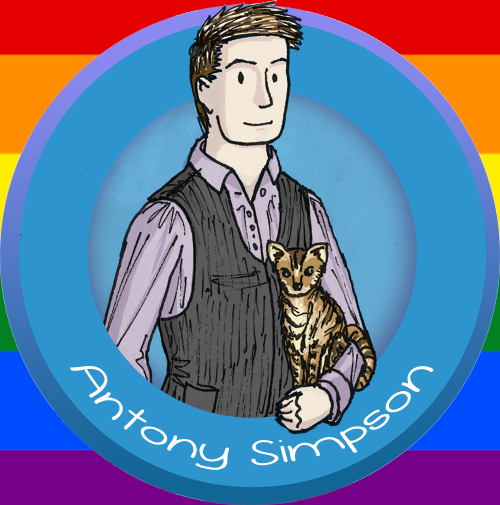 |
I first discovered the amazing Writer Elizabeth Gilbert when she did a TED talk on creativity (see this TED talk at the end of this post).
Gilbert became a huge success back in 2006, when her memoir Eat, Pray, Love became an international bestseller. It was later made into a film. Prior to this Gilbert had always felt that it was her responsibility to take care of her creativity, so wrote while holding down other jobs. This big success meant she could afford to write full-time. I intend to read and review Eat, Pray, Love at some point in the future. Gilbert was inspired by creativity, the creative process and the concept of creative living. She began to explore how other cultures throughout history had viewed creativity and the artists that create. This lead her to study the ancient Romans and Greeks. Which in turn led to her quirky and unconventional views about creative living, which she explores in Big Magic – Creative Living Beyond Fear. |
Big Magic is split into six parts: Courage, Enchantment, Permission, Persistence, Trust & Divinity. Each section deserves to be written about individually, which is what I have done below:
Courage
Gilbert starts by defining what creative living means to her. She describes it as having the courage to follow your aspirations, longings and talents. Gilbert writes about desires, that you are driven to do from somewhere deep within. Things or activities that have great meaning to you. Gilbert’s examples include: writing, dancing, painting and basically anything with any sort of activity that has an element of creativity within it.
Gilbert writes about fear. She recognises that fear can and does stop some people from living creatively. But as she explains, fear is boring – as fear’s inner voice repeats the same things. Whereas living creatively is never boring. Gilbert advises the reader that fear is not to be conquered, but acknowledged and thanked for its concern. Then the reader should do the thing that scares them anyway.
Gilbert’s key message in this section is that the reader should follow their curiosity without being inhibited by their fear.
Enchantment
Gilbert believes that ideas are disembodied energy that wants to manifest. But in order to do that they need to work with willing, creative humans. Humans that will commit their time and energy to bringing the idea into reality.
A good lesson learned from Gilbert in this section is that you have to make space for the idea. Both physically and figuratively. Which is why in my workspace, my desk has been cleared, ideas have been listed on the wall (in the order that they will be completed) and that time is regularly set aside to work on the idea at the front of the queue.
Gilbert writes that if the reader commits to an idea, that they should try to keep their end of the bargain. Otherwise the neglected idea will eventually get fed up of excuses, waiting and will continue on its travels looking for another human collaborative partner.
Gilbert gives an example from her own life, writing about an idea for a book that got away from her and found its way to Ann Pattchett (another author who has an especially special place in my heart for writing The Magician’s Assistant, but I digress). Gilbert tells the story of a conversation she had with Pattchett:
I tried to summarize my ex-novel as concisely as possible. I said, “It was about this middle-aged spinster from Minnesota who’s been quietly in love with her married boss for many years. He gets involved in a harebrained business scheme down in the Amazon jungle. A bunch of money and a person go missing, and my character gets sent down there to solve things, at which point her quiet life is turned into chaos. Also, it’s a love story.”
Ann stared at me from across the table for a long minute.
Before I continue, I must give you to understand that – decidedly unlike myself – Ann Patchett is a true lady. She has exquisite manners. There is nothing vulgar or coarse about her, which made it even more shocking when she finally spoke:
“You have got to be fucking kidding me.”
“Why? I asked. “what’s your novel about?”
She replied, “It’s about a spinster from Minnesota who’s been quietly in love with her married boss for many years. He gets involved in a harebrained business scheme down in the Amazon jungle. A bunch of money and a person go missing, and my character is sent down there to solve things. At which point her quiet life is completely turned into chaos. Also, it’s a love story.”(From: Big Magic Creative Living Beyond Fear, by Elizabeth Gilbert, p. 53-54, 2015. Copyright © Elizabeth Gilbert 2015.)
Permission
Gilbert explains that she never felt the need to be given permission to begin writing; but that some people do feel the need for permission to create. So she advises the reader to give themselves permission to start living creatively. She advises the reader to label themselves, i.e. I am a Writer. Gilbert advises the reader to be authentic and live creatively, first and foremost for themselves.
Gilbert advises the reader to avoid getting into debt. According to Gilbert debt leads to trappings that will greatly influence the ability to live creatively. Being debt free is likely something that most readers will need to work on.
Persistence
Gilbert encourages readers to keep going and don’t be disheartened if the first thing created gets no recognition. Take your time. Learn your craft. She reminds readers that people go to great lengths to create, often maintaining a day job, having busy lives, but always making the time for creativity.
Gilbert motivates her readers to protect the space and time to create from intrusions, distractions and most of all procrastination. Procrastination can be fear’s way of avoiding starting, continuing or finishing a creative project. So watch out – because fear can be sneaky in its tactics.
Gilbert advises of the perfectionism pitfall for creatives. She writes that done is better than good. Yes, by all means work hard to make sure the work is good, but good enough will do. Aiming for perfection is where most people set themselves up to fail, because perfection is an unrealistic goal that either drives a person insane or causes them to give up on an idea.
Trust
Gilbert writes that a creative should go where the idea takes them, even if it’s emotionally uncomfortable. Gilbert states that you should trust in the idea and continue with Stubborn Gladness.
For Gilbert, living creatively is all about following where curiosity takes her. She encourages the reader to follow their own curiosity.
Divinity
Gilbert concludes by writing that creativity is scared and that the reader should start creative living immediately.
Throughout Big Magic Gilbert’s writers voice is warm and engaging. Gilbert tells many wonderful, meaningful and great little stories as examples of her ideas on creativity in action. She tells these stories exceptionally well.
Stories are not the most scientific form of evidence. But does there need to be empirical evidence for creativity and the creative process? After all, even those at the heart of creative processes struggle understand or explain how their creative process works.
What matters in Big Magic, is that Gilbert writes her truth. Every word is written for herself – so that she can further her study of creativity.
The audience for this book is anyone that wants to live a creative and fulfilled life. Gilbert is undoubtably clever, wise and inspiring in Big Magic. The reader will find that some, most or all of Gilbert’s work will resonate with themselves.
So go and buy Big Magic to lap up some creative living inspiration. Big Magic is available to buy on Amazon.
Review soon,
Antony
Elizabeth Gilbert muses on the impossible things we expect from artists and geniuses — and shares the radical idea that, instead of the rare person “being” a genius, all of us “have” a genius. It’s a funny, personal and surprisingly moving talk.
(From: TED, Last Accessed: Thursday 3rd December 2015.)


